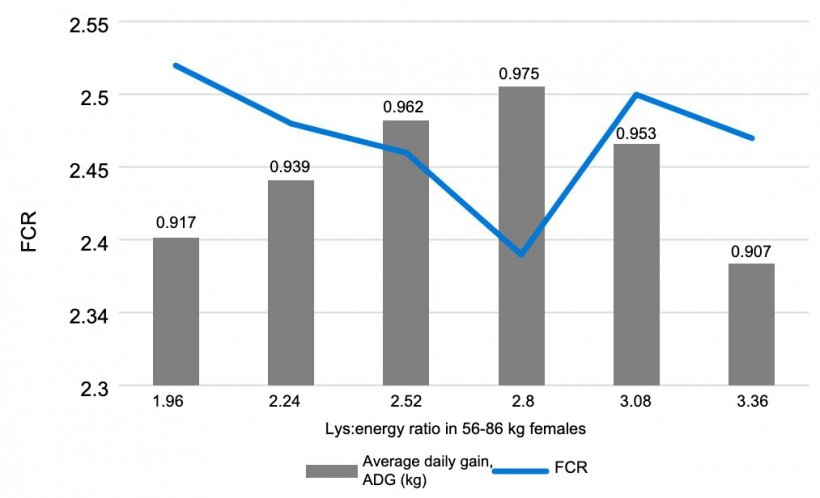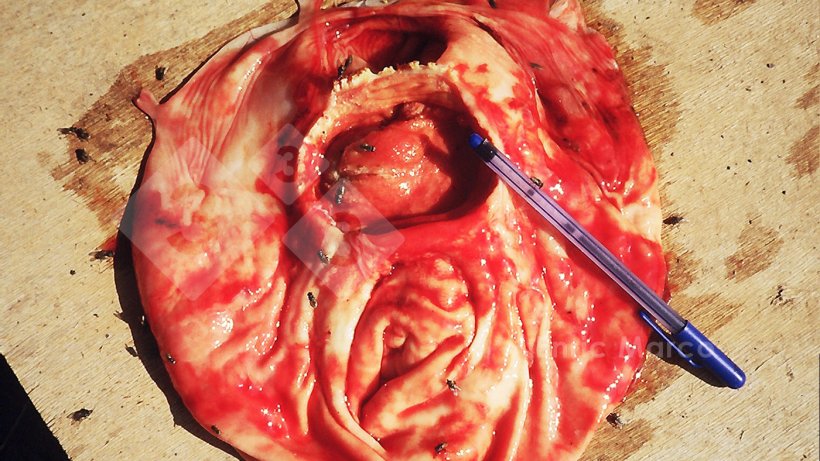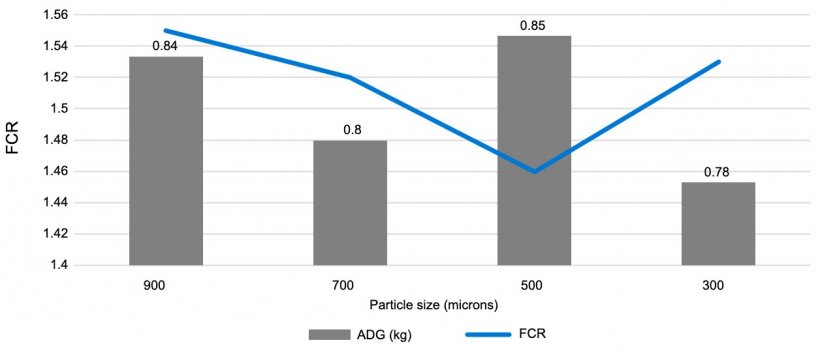The higher the energy concentration, in principle, the better the feed conversion ratio (FCR), but only if it is accompanied by a proper protein intake. The higher the energy concentration, the lower the daily intake and the higher the protein content should be. Lack of protein will prevent pigs from reaching maximum muscle deposition, which could alter the body composition in favor of a higher fat percentage, which would have a negative effect. But excess protein or excess in specific amino acids is also detrimental.

Graph 1. Effect of the lysine: energy ratio in 56-86 kg females. Main, et al. 2002.

The diet must be free of anti-nutritional factors (trypsin inhibitors, alkaloids, etc.) since, as their name indicates, they will detract from the nutritional value of the diet, resulting in an increase in the feed conversion ratio; and toxic substances. The presence of mycotoxins can affect the daily feed intake and exert a negative effect on the intestinal wall leading to a negative effect on growth and feed efficiency.

Photo 1. Advanced gastric ulcer.
The grind of the diet affects the digestibility of nutrients, so coarser grinds tend to worsen conversions while finer grinds improve them. However, too fine of grinds may be detrimental because of their effect on gastric ulceration.

Graph 2. Effect of particle size (microns) on growth and feed conversion in the post-weaning phase.
Pelleted feeds improve feed conversion because they improve palatability, reduce wastage and, due to heat treatment of ingredients, improve nutrient utilization. Although the observed improvement in feed conversion from feeding pelleted feed may be confounded by the reduced particle size of the grain, the overall improved performance of pelleted diets has been well documented, with improvements of up to 7% in feed conversion being described (Wondra, KJ, et al.1995). But it is important to note that in cases where the pellet is of poor quality, with percentages of mixed meal, this beneficial effect can be lost, even leading to considerable increases in feed conversion in those cases where the meal presentation represents a considerable percentage of the feed (>25%).
Continue to delve deeper into the external factors affecting the FCR by reading articles on:
Or browse the tool to identify the cause of your elevated FCR:






